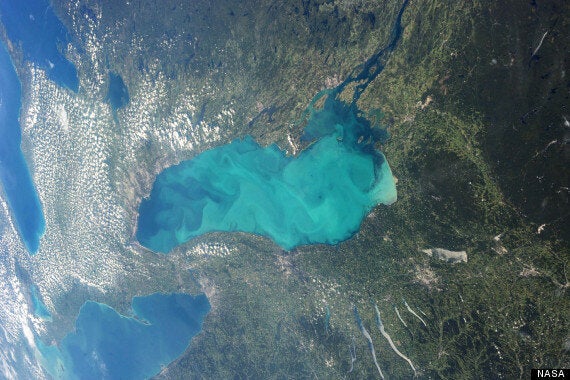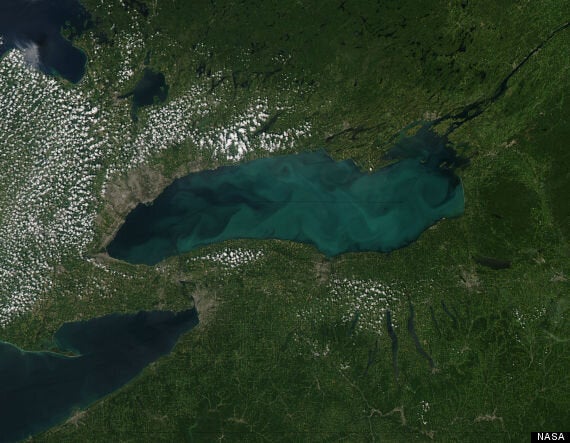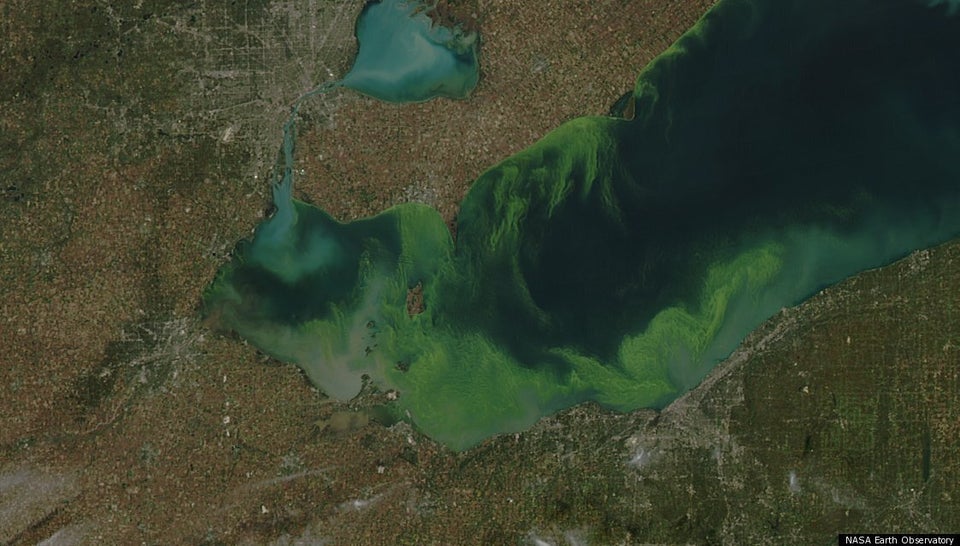Lake Ontario glows a terrifying neon green in two photos released by NASA last week, but the cause may not be as scary as it seems.
The first photo was taken by astronauts on the International Space Station on Aug. 24 and posted online by NASA. Initially, NASA identified a massive phytoplankton or algae bloom as the cause of the change in colour. The post was updated after several scientists identified a "whiting event" as the actual culprit, according to Global News.

A whiting event is, however, often connected to algae. Warm weather leads to algae which leads to a rise in a lake's pH which causes calcium and carbonate naturally present in the water to harden into blocks of calcite. These white blocks strongly reflect blue and green light, which leads to the glowing effect, Great Lakes biologist Michael Twiss told CBC.
Warm water on its own also contributes to the whiting effect.
Whiting used to be common in Lake Ontario, but the zebra mussels that invaded the water in the 1990s have been accumulating calcium in their shells, Twiss said.

A second photo of the whiting event on Lake Ontario taken by NASA's Aqua satellite on Aug. 24.
The good news is that the colour of the lake isn't a sign of a massive algae bloom, like those commonly seen in Lake Erie, that can cause the release of toxins such as microcystin that are harmful to people and animals. Algae can also reduce oxygen levels in a lake, killing off fish.
Jim Watkins, a post-doctoral researcher at Cornell University and the author of a recent paper on whiting, told Global that chlorophyll concentrations, a sign of an algae bloom, were 10 times lower in Lake Ontario than in Lake Erie in early August.
Whiting isn't exactly a bad thing, but it's not good either. Watkins told Global the events didn't start happening until the 1930s when we started releasing phosphates, mostly from cleaning products and agricultural fertilizer, into the Great Lakes.
A report issued last week by a joint U.S. and Canadian commission recommended a crackdown on the release of phosphorus into the lakes.
Algae thrives in a phosphorus-rich environment, leading to "dead zones" like those increasingly seen in Lake Erie. Photos of the largest ever bloom in Lake Erie in 2011 have led to increased awareness of the environmental challenges facing the Great Lakes. You can see those scary shots in the gallery below.
